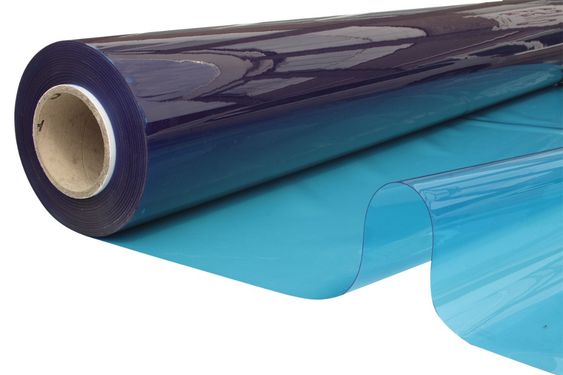High-Density Polyethylene (HDPE) sheets have become a top choice across various industries, from construction and agriculture to packaging and household use. Known for their durability, flexibility, and eco-friendliness, HDPE sheets offer unmatched utility in numerous applications. In this comprehensive guide, we delve into the properties, benefits, applications, and environmental advantages of HDPE sheets, highlighting why they are a valuable material for both personal and industrial use.
What are HDPE Sheets?
HDPE, or High-Density Polyethylene, is a type of thermoplastic polymer made from petroleum. It is known for its high strength-to-density ratio, making HDPE sheets strong, lightweight, and resilient. Unlike other materials, HDPE is resistant to impact, moisture, chemicals, and UV rays, which contributes to its extensive lifespan and versatility.
- Density: HDPE sheets are lightweight yet incredibly sturdy.
- Resilience: They offer high resistance to chemicals, water, and temperature changes, making them ideal for outdoor use.
- Eco-Friendliness: HDPE sheets are recyclable and reusable, promoting sustainable use and reducing waste.
Top Benefits of HDPE Sheets
1. Exceptional Durability
HDPE sheets are renowned for their long-lasting durability. Resistant to corrosion, abrasion, and impact, they can withstand harsh conditions without losing their structural integrity. This makes HDPE an excellent choice for applications in industries that require tough and resilient materials, such as construction, automotive, and agriculture.
- Weather Resistance: HDPE sheets can handle prolonged exposure to sunlight, rain, and temperature variations, making them ideal for outdoor applications.
- Chemical Resistance: These sheets can resist a wide range of chemicals, including acids, alkalis, and solvents, without degrading or weakening.
2. Lightweight and Easy to Handle
Despite their strength, HDPE sheets are relatively lightweight, making them easy to transport, handle, and install. This property is especially beneficial in construction, where handling and installation time directly impact labor costs and efficiency.
- Easy Installation: HDPE sheets are simple to cut, weld, and shape, allowing for easy customization based on specific project needs.
- Reduced Transportation Costs: Being lightweight, HDPE sheets reduce transportation costs and ease of handling on-site.
3. Versatile Applications
HDPE sheets offer a range of applications due to their versatility, from pond linings and roofing materials to chemical tanks and playground equipment. Their resilience and adaptability make them a popular choice across multiple sectors, including:
- Construction and Infrastructure: Used for water pipes, insulation, and as protective liners in construction projects.
- Agriculture: HDPE sheets are used for greenhouse covers, pond liners, and water storage tanks.
- Industrial Packaging: Popular in the packaging industry for containers, bottles, and protective packaging materials.
4. Eco-Friendly and Recyclable
HDPE sheets are fully recyclable, which makes them a sustainable choice for environmentally conscious applications. They can be recycled and repurposed multiple times, reducing waste and the need for new raw materials.
- Promotes Sustainability: By using HDPE sheets, businesses and individuals contribute to reducing plastic waste.
- Reusability: HDPE sheets can often be reused after the end of their primary application, further enhancing their eco-friendly appeal.
5. Cost-Effective
HDPE sheets are relatively affordable compared to many other materials with similar durability and resilience. Their long lifespan and low maintenance costs make them a cost-effective choice for both short-term and long-term projects.
Applications of HDPE Sheets
HDPE sheets have found their place across a wide range of industries due to their flexibility and resilience. Some of the key applications include:
1. Construction and Civil Engineering
In construction, HDPE sheets are used as protective barriers, waterproofing membranes, and geomembranes. Their high tensile strength and durability make them suitable for heavy-duty applications like road and bridge construction, pond and canal linings, and landfill capping.
- Protective Linings: HDPE sheets are used as liners to prevent soil erosion in landscapes, ponds, and water retention areas.
- Waterproofing Solutions: Their resistance to moisture and weathering makes HDPE sheets ideal for protecting building foundations and roofs from water damage.
2. Agriculture and Aquaculture
HDPE sheets play an important role in agriculture, as they are used for pond linings, greenhouse covers, and water storage tanks. Their UV resistance and waterproof properties make them perfect for outdoor use, where they withstand exposure to sunlight and varying weather conditions.
- Pond Liners: HDPE pond liners are leak-proof, preventing water loss and helping conserve water resources.
- Greenhouse Covers: These sheets are often used as covers for greenhouses, providing insulation and protecting crops from harsh weather.
3. Industrial and Chemical Applications
In industries, HDPE sheets are commonly used for chemical storage tanks, pipes, and ductwork due to their chemical resistance. They are widely employed in facilities where chemical exposure is high, as they do not corrode or break down when exposed to most chemicals.
- Chemical Tanks and Containers: HDPE sheets are resistant to a variety of acids and bases, making them ideal for chemical storage solutions.
- Waste Treatment Facilities: HDPE’s chemical resilience is perfect for lining waste treatment areas, as it prevents leaching and chemical contamination.
4. Packaging and Consumer Goods
HDPE sheets are also widely used in the packaging industry, where they are transformed into containers, bottles, and packaging materials. Due to their non-toxic nature, HDPE sheets are safe for food packaging, ensuring that food products remain uncontaminated and safe for consumption.
- Food Packaging: HDPE sheets are FDA-approved for food contact, making them safe for packaging and storage of food items.
- Protective Packaging: They provide a protective layer in shipping and storage, ensuring the safety and integrity of various goods.
5. Playground and Outdoor Furniture
HDPE’s durability and UV resistance make it a popular choice for outdoor furniture and playground equipment. It withstands regular wear and tear, and its impact resistance reduces the risk of breakage, making it a safe and sturdy material for outdoor use.
- Playground Equipment: HDPE sheets are used for slides, swings, and benches in playgrounds due to their safety and durability.
- Outdoor Signage and Furniture: The material’s resilience to weathering ensures a long lifespan for outdoor furniture and signage applications.
Maintenance and Care for HDPE Sheets
While HDPE sheets are known for their resilience, a few maintenance steps can help extend their lifespan further:
- Regular Cleaning: Use mild soap and water for routine cleaning to remove dirt and prevent buildup.
- Avoid Abrasive Chemicals: While HDPE is chemically resistant, harsh solvents or abrasive cleaning agents may dull the surface.
- UV Protection (for Certain Applications): Although HDPE sheets are UV-resistant, additional UV protectants can be applied to extend their durability in direct sunlight applications.
Environmental Impact and Recycling of HDPE Sheets
One of the most significant advantages of HDPE sheets is their positive environmental impact compared to other plastics. As a recyclable material, HDPE sheets reduce the demand for new plastic production and contribute to lower plastic waste in landfills. Once an HDPE sheet reaches the end of its life cycle, it can be recycled into new products, minimizing waste and supporting a sustainable, circular economy.
- Eco-Friendly Disposal: HDPE sheets are 100% recyclable and can be processed without releasing harmful toxins, making them safe for the environment.
- Encourages Responsible Consumption: Opting for HDPE products helps reduce single-use plastics and encourages a shift towards sustainable, long-lasting materials.
Advanced Applications of HDPE Sheets
1. Infrastructure and Public Utilities
HDPE sheets are finding increasingly innovative uses in infrastructure and public utilities, especially in projects that demand corrosion-resistant, non-reactive, and low-maintenance materials. Their durability and ability to withstand high-pressure environments make them indispensable in the following ways:
- Pipeline Liners and Conduits: HDPE sheets are used to line water and sewage pipelines, extending their life and preventing corrosion.
- Culverts and Drainage Systems: In stormwater management, HDPE sheets serve as culvert liners and drainage system components, reducing erosion and supporting water flow efficiency.
- Retaining Walls and Erosion Control: Due to their structural strength, HDPE sheets are used in retaining walls and riverbank reinforcements, preventing soil erosion while offering easy installation.
2. Marine and Aquatic Applications
HDPE sheets are widely regarded as one of the best materials for marine applications due to their resistance to saltwater, UV rays, and algae growth. From docks to fishing platforms, HDPE provides a low-maintenance, long-lasting solution for aquatic structures.
- Dock and Pier Construction: HDPE sheets are used in the decking of docks and piers because they don’t rot or warp from moisture, making them ideal for saltwater environments.
- Aquaculture and Fish Farming: In fish farms and aquaculture setups, HDPE sheets create enclosures that are safe for marine life and resistant to algae and bacterial growth, reducing the need for frequent cleaning.
- Buoys and Floating Structures: Lightweight yet strong, HDPE sheets are molded into floating platforms, buoys, and pontoons, ensuring buoyancy and durability in open water.
3. Automotive and Aerospace Industry
In the automotive and aerospace sectors, HDPE sheets offer a lightweight, durable alternative for various components. Their ability to withstand high impact and resist chemicals makes them suitable for the following:
- Fuel Tanks and Fluid Containers: HDPE is commonly used in fuel tanks, brake fluid containers, and oil reservoirs due to its resistance to petroleum and high durability.
- Battery Casings and Components: In electric vehicles, HDPE is a choice material for battery casings due to its non-conductive nature and chemical stability.
- Interior Panels and Protective Covers: Lightweight HDPE panels are utilized in both interior and exterior automotive applications, from door panels to seatback covers, offering durability without adding significant weight.
4. Household and DIY Projects
Due to its easy-to-handle properties and adaptability, HDPE sheets have made their way into DIY and household projects. Homeowners and hobbyists use HDPE for various functional and creative applications, such as:
- Kitchen Cutting Boards: FDA-approved food-grade HDPE sheets are used for making cutting boards that are durable, non-porous, and resistant to bacteria growth.
- Garden Planters and Raised Beds: HDPE’s non-toxic nature makes it perfect for creating raised garden beds, plant containers, and even compost bins that are safe and easy to clean.
- DIY Furniture and Storage Solutions: HDPE sheets can be cut and shaped to create furniture like shelving, outdoor seating, and storage solutions, ideal for custom designs.
5. Health and Sanitation Solutions
HDPE’s unique properties make it a suitable choice for health and sanitation applications. Since HDPE is non-porous and easy to clean, it prevents the growth of bacteria and fungi, making it ideal for hygienic settings.
- Medical Trays and Equipment Covers: In hospitals and laboratories, HDPE sheets are used to create trays, covers, and containment bins due to their non-reactive and easy-to-sterilize nature.
- Washroom Partitions and Panels: HDPE partitions are popular in public washrooms because they are moisture-resistant, durable, and require minimal maintenance.
- Hospital Bed Frames and Trolleys: HDPE sheets serve as lightweight, durable materials for hospital furniture that can withstand heavy use and regular cleaning.
Conclusion: Why Choose HDPE Sheets for Your Needs?
HDPE sheets are a versatile, durable, and eco-friendly choice for numerous applications. From construction and agriculture to packaging and outdoor furniture, their resilience and adaptability make them a go-to material across various industries. For those seeking a cost-effective, sustainable, and long-lasting solution, HDPE sheets offer an impressive range of benefits, proving that they are more than just plastic—they are a smart investment in durability and sustainability.



